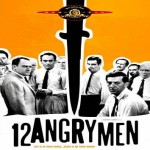Federal Sentencing and the Lack of Theory in Criminal Justice
Defendants in federal criminal cases often cooperate with the government to get their sentence reduced, especially when facing an extremely high statutory mandatory minimum (it is not uncommon for federal defendants to face mandatory minimums of ten years or higher). In these cases, to get below the mandatory minimum, the government must file a motion to credit the defendant for his or her assistance. If this is done before sentencing, it is filed pursuant to 18 U.S.C. § 3553(e); if after sentencing, it is filed pursuant to Fed. R. Crim. Pro. 35(b). A recent emerging issue in federal sentencing law has been what factors a judge may consider when reducing a sentence under either of these provisions.
Without a mandatory minimum, a judge is free to impose a reasonable sentence under 18 U.S.C. § 3553(a), which tells judges to account for the nature of the crime; the history, characteristics, and rehabilitative needs of the defendant; the public interest in protection, deterrence, and punishment; the type of sentences available; the applicable Sentencing Guidelines (including pertinent policy statements); the need for uniformity in sentencing similar defendants for similar crimes; and restitution. When a mandatory minimum must be imposed, however, most courts have held that only the defendant’s assistance may be considered when imposing a sentence below the minimum.
The Seventh Circuit has recently addressed this issue in the context of both 3553(e) and Rule 35. See United States v. Johnson, No. 08-3541 (7th Cir. September 4, 2009); United States v. Shelby, No. 08-2729 (7th Cir. October 20, 2009).

 Jury nullification is a controversial issue in criminal law. There are undoubtedly many definitions of it, but it occurs most fundamentally when a jury acquits a defendant even when the letter of the law says that he or she committed a crime. Appearing at first blush as a theory for anarchists, it is a well-established power of the jury in criminal cases, pre-dating the United States Constitution.
Jury nullification is a controversial issue in criminal law. There are undoubtedly many definitions of it, but it occurs most fundamentally when a jury acquits a defendant even when the letter of the law says that he or she committed a crime. Appearing at first blush as a theory for anarchists, it is a well-established power of the jury in criminal cases, pre-dating the United States Constitution.  I want to begin by thanking Dean O’Hear and Marquette University Law School for the opportunity to be October 2009’s “Alum Blogger of the Month.”
I want to begin by thanking Dean O’Hear and Marquette University Law School for the opportunity to be October 2009’s “Alum Blogger of the Month.”